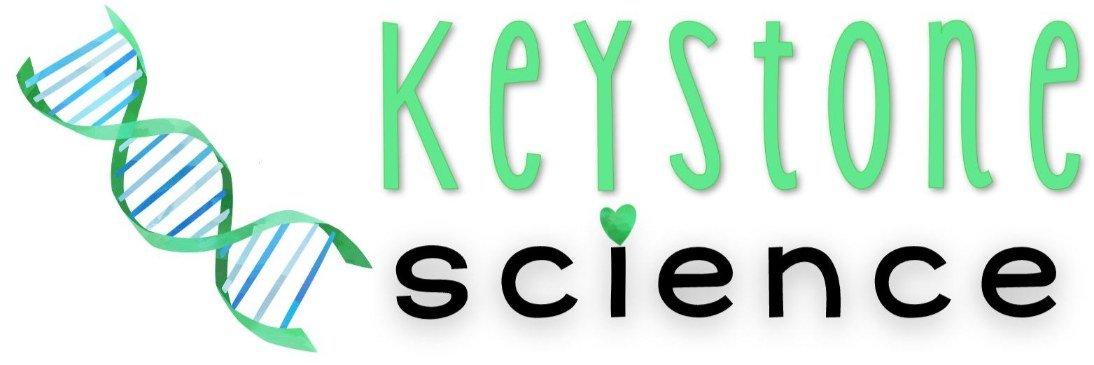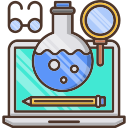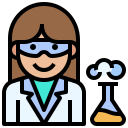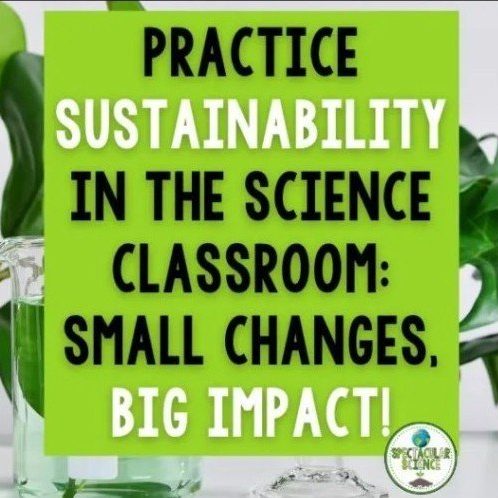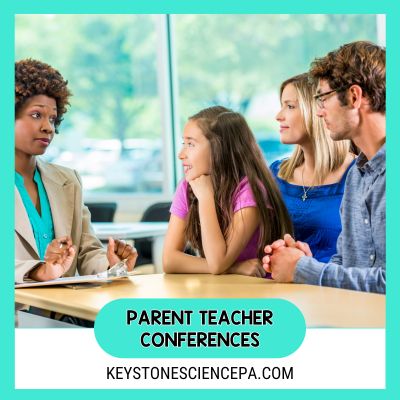At the beginning of the school year there are things you expect: syllabus day, review procedures, build positive relationships with your students…..getting a compliment as a high school teacher from a student is something that is rare and you might even need to take a minute to process, because it doesn’t happen that often!
One of the best compliments I’ve ever received as a teacher was a few years ago. I was standing at the door greeting my students like I do everyday, many just walking right by me, on their phones or listening to music. But this time, one of my students stopped right in the doorway, looked directly at me and said…
“This is my hardest class, but I actually like coming!”
I’m pretty sure my jaw actually dropped 🤓
Something that I’m sure my student has forgotten she even told me, but this has stuck with me for years because THAT right there has always been my goal, especially as a high school teacher.
Yes, I want my students to learn the content, think like a scientist and remember more than just mitochondria is the powerhouse of the cell 🙃. But none of that can happen if our students don’t feel comfortable in the classroom!
My goal at the start of every school year is to build positive relationships with my students. These relationships are so much more important than we think. This is literally the backbone of why we all have a favorite teacher and why that teacher made an impact in our life.
Because they took the time to build positive relationships, to listen and to establish a supportive learning environment for us.
With the school year in full swing, I want to share with you 3 of my favorite tips to build positive relationships in the classroom and how you can apply these right away!
Tip #1 💡: Take the Time to Learn About Your Students’ Individual Interests and Aspirations
It’s like when someone asks “How are you really doing?” and they actually wait for a response.
Taking the time to ask and hear what your students want to share is the foundation to build positive relationships between students and the teacher.
Maybe they share something about a place they visited, a story about a sibling, their favorite tv show. These are all things that you can use to share a common interest or relatable story.
But the trick is, how to learn our students interests and aspirations? Here’s how ⤵️
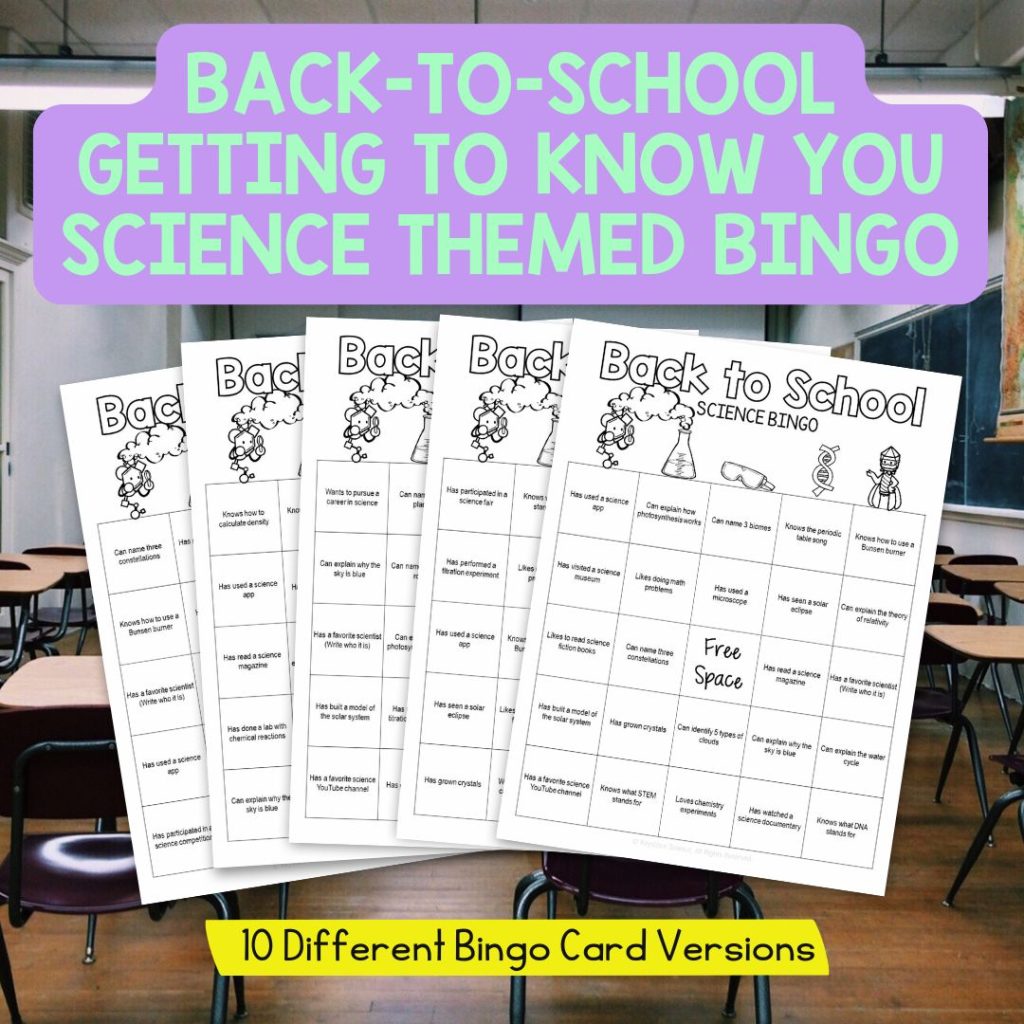
1️⃣Get to Know You Activities: By adding icebreakers like the Science Bingo game …which by the way is completely ✨FREE✨ …and surveys at the beginning of the year, you can get students to engage in conversations and learn more about their peers.
Plus, you also get to gather information about students’ hobbies, interests, and future aspirations to help when establishing positive student-teacher relationships.
It’s a win-win!
2️⃣Interest-Based Projects: The easiest way to incorporate interest-based projects is to let students explore their questions about a phenomenon they observe in the classroom. By using design projects that allow students to explore topics they are passionate about, it allows for the learning process to become more relevant and naturally engaging.
3️⃣One-on-One Conversations: Schedule brief, informal meetings or chats with students to discuss their interests and goals outside of academic performance. These are my absolute favorite and can be as simple as chatting with a student or group as the period starts to wind down. You might be surprised what is shared when you show genuine interest in what their aspirations are.
By creating space and guidelines for students to explore a topic of interest or share their approach to an investigation, it allows for a sense of ownership in their learning and more importantly an opportunity for them to show you what truly “stuck”.
Tip #2 💡: Offer Genuine Praise and Encouragement to Acknowledge Their Efforts and Accomplishments
I don’t care what age you are, we all love a little positive reinforcement now and then! More importantly, the impact of a teacher’s encouragement can leave such a mark on a student’s motivation and self-esteem.
We have no idea what our students go home to or what their day has been like when they step into our classroom. So if we can be a source of genuine praise for acknowledging their efforts, then why not be that for them?
But, there’s more to it than just a generic “Good job today!” or a cute sticker on a worksheet (yes, high school students still love stickers 😁).
There are specific strategies to practice when giving positive reinforcement:
1️⃣Specific Praise: By using specificity, it will not only allow the student to see exactly what they had done well at, but it also gives a personal touch and recognition to that particular student.
Here are some examples of specific positive reinforcement statements you can use:
👉🏻Some sentence stems teachers can use:
- ➡️”I was really impressed by the way you ________ during ________ because it showed ________.”
- ➡️”Your effort in ________ was outstanding, especially when you ________. It really made a difference in ________.”
- ➡️”You demonstrated excellent ________ skills when you ________, and it helped ________.”
2️⃣Celebrating Success: Create a system for celebrating both big and small achievements in the classroom, such as a “Student of the Week” or a bulletin board for showcasing student work.
How to use this in your classroom:
- ➡️Have students keep a lab portfolio so they can see their growth throughout the year!
- ➡️Set up a board in the class dedicated for students where they can hang up work they are proud of and want to share with the class!
3️⃣Encouraging Effort: This step is SO IMPORTANT and shouldn’t be underestimated, especially in science because when relying so heavily on data, students can interpret a grade on a lab for example as something they did wrong, if it’s a grade they weren’t expecting.
Instead of just adding a grade, take a bit of time to provide written or verbal feedback to what they can revisit, how to improve their analysis and not just focus on the end result of a grade.
We need to remind our students that science is not a linear process, it’s a continuous cycle of questioning, testing, analyzing, questioning, retesting etc.
If your school does not have a policy against test corrections, allow students to revisit their tests and correct incorrect responses, this is how students learn!
Consider giving second-chance quizzes or test retakes if students do exceptionally poorly the first time- of course, within reason. It’s important for students to also understand the expectation that they be prepared and not rely on the possibility of retakes.
By emphasizing student effort and highlighting areas they have improved, it results in a shift to a growth mindset! No, a student might not get 100% on every test and that’s ok!
For me, implementing these strategies since returning to the classroom in 2020 has created a community of growth. It’s been my proudest achievement as an educator that my students have a safe space to experiment, fail, and not be afraid to speak up or be wrong.
Tip #3 💡: Listen Actively and Empathetically to Your Students’ Concerns and Perspectives
You know how we expect our students to be engaged and active listeners? Well, the same applies to us as educators.
Practicing active and empathetic listening is another tool needed to create a respectful and inclusive classroom environment.
Remember, we don’t know the environment that our students go home to each day. Instead of assuming someone is there to listen without judgment, we can be that sounding board for them.
Here are my approaches to practicing active and empathetic listening:
1️⃣Open Communication Channels: Establish routines or systems for students to voice their concerns and ideas, such as suggestion boxes or regular class meetings.
2️⃣Active Listening Techniques: Teach and model active listening skills, such as maintaining eye contact, nodding, and reflecting back what the student has said.
I use these ⤵️sentence stems in my classroom:
- ➡️”It sounds like you’re saying ________. Can you tell me more about that?”
- ➡️”I hear you mentioning ________. How did you come to that conclusion?”
- ➡️”I appreciate your point about ________. What do you think we could do to address this?”
Not only does it show active listening but encourages students to think more critically about their ideas and support their ideas with data and evidence.
3️⃣Creating a Safe Space: Foster a classroom culture where students feel safe to express their thoughts and feelings without fear of judgment.
For this, there is no magic trick or perfect strategy. Instead, this is more of a goal of consistency and implementing the strategies in this post.
Here are actual student comments I’ve received about my classroom:
- 🫶”I always felt welcome in her classroom”
- 🫶”I had a teacher who was sympathetic and knowledgeable, and I’ve always felt safe in her classroom”
- 🫶”You were open to conversations and we all became super close as a class”
- 🫶”We could always ask you questions and not be scared that it wasn’t going to be answered”
- 🫶”I liked the positive energy in the room every day”
- 🫶” I loved how open to questions you were and how you were firm but in a nice way, it really established a sense of respect from the class for you.”
The common theme was that each student felt safe and welcome.
Welcome to talk. Welcome to ask for help. Welcome to make mistakes.
Conclusion
Whether you are in your first week back or a few months in, it is NEVER too late in the school year to implement these strategies and build positive relationships in your classroom.
We all have that one teacher who made us feel warm, fuzzy and heard. Be that for your high schoolers- they might need it more than you think.
I would love to hear how you build positive relationships in your own classroom or even what has worked for you!
Feel free to share it below in the comments section or send me a DM on Instagram 👉 @keystonesciencepa and let me know there.
Just a reminder ❗If you are looking for fresh ideas and easy to use classroom strategies, then I know you will LOVE Keystone Science!
To be the first to know when FREEBIES, new products are released and other tips are shared by joining the Keystone Science Community!
Let’s Connect!
💡Feel free to explore Keystone Science for ready-to-use high school biology & ecology NGSS aligned notes and activities.
💡Subscribe to my email list for weekly tips direct to your inbox.
💡Follow me on Instagram for daily tips, motivation, and facts you can use in your classroom!
🌟Share in the comments or email me directly 👉🏻 [email protected]
